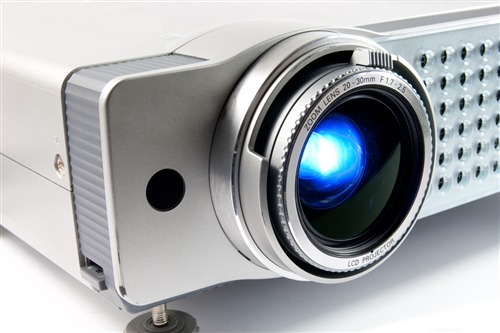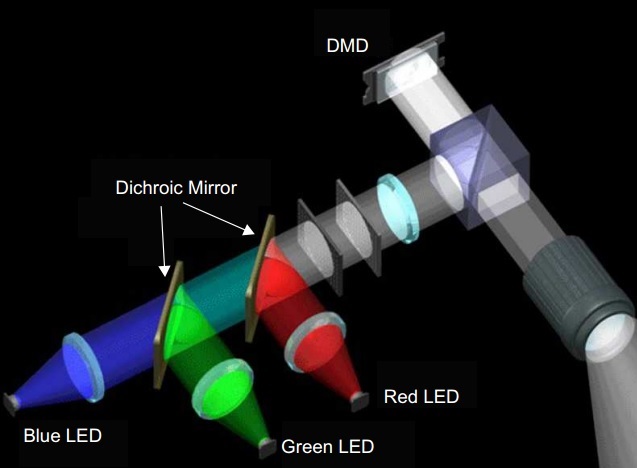SSZTCA3 August 2015 TPS92512 , TPS92512HV , TPS92513 , TPS92513HV

Have you ever tried to present ideas on a projector and found that the customers’ meeting room has no equipment with which to do this? Wouldn’t it be handy if you had a portable one ready at hand? This happened to me recently, and without such a portable device, I had to show my presentation on my laptop.
All projectors require a light source to create a projected image. In today’s market, portable projectors, such as those incorporating TI DLP® Pico™ display technology, use LEDs as light sources. LEDs offer a high brightness-to-power ratio in a small package, enabling smaller, power efficient projectors.
These projectors usually weigh much less than traditional ones, and their response time is almost instant. They require no warm up or cool down time. Also, these portable projectors usually run on batteries, which are direct current (DC) in nature. How do modern projectors work, and why are they so compelling to use? As shown in Figure 1, the LED is a diode that emits light; it provides a certain wavelength (color) when driven by a certain amount of electrical current. The higher the electrical current driven into the LED’s operable range, the higher the brightness that the diode can produce. The color of the diode also depends on the accuracy of the electrical current driven into it. The electrical current level for LEDs in portable projectors usually ranges from 1 A to 2.5 A.
 Figure 1 Optical layout of LED
projector utilizing TI DLP display technology
Figure 1 Optical layout of LED
projector utilizing TI DLP display technologyHave you ever wondered what’s required to drive LEDs in a battery-powered portable projector?
High current LED drivers make the way. Some DLP chip sets include a custom LED driver, but not all DLP chip sets come with dedicated LED drivers. In those situations, the projector manufacturer must develop their own LED driver solution. One option is to consider DC/DC step-down LED drivers that TI recently introduced. Capable of 2.5-A current output, the TPS92512 buck LED driver converts DC input voltage ranges from 4.5 V to 60 V (HV version) or 42 V (standard version) to drive LEDs at a ±5% current accuracy.
Since color depends on current accuracy, the more accurate we can drive current into the LED, the more accurate the display color and tone from the projector. The TPS92513, pin-to-pin compatible with the TPS92512, is capable of 1.5-A current output. Both drivers accept analog voltage through the IADJ pin to adjust the LED current output level linearly, and both of them accept digital PWM signal through the PDIM pin. That means these drivers can do both analog current level adjust (for color tone adjustments) and digital level dimming, without compromising either using analog current level (which might change the color tone) only or digital level dimming without color tone adjustment.
I do many business presentations each year, so I am eagerly waiting for a handy, portable LED projector using the TPS92512 or TPS92513 for the next time I visit customers.
Additional Resources:
- Discover what’s new for LED Lighting Illumination on TI.com.
- Start designing today with WEBENCH® tools.
- Get started utilizing TI DLP Pico projection display technology.
- Use SPICE models to simulate and verify TPS92512, TPS92512HV, TPS92513 and TPS92513HV circuits.
- Attend a webinar on the basics of LEDs.